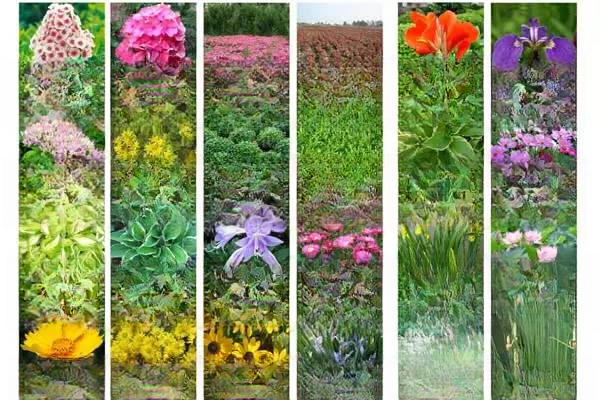[Flower World] New favorites in the garden main types of perennial flowers and key points of cultivation
Perennials are plants that can live for several to many years without woody stems. They can be divided into two categories: cold-resistant perennials and evergreen perennials. In the former, the above-ground stems and leaves all wither in winter, and the underground parts enter a dormant state. In the latter, the stems and leaves remain green in winter, but stop growing when the temperature is low, and enter a semi-dormant state.
Main types
The main cultivated species of perennial flowers are: Aquilegia, variegated reed, Belamcanda, Campanula, Cornflower, Coreopsis, Pampas grass, Chrysanthemum, Perennial Dianthus, Lotus Peony, Perennial Gaillardia, Hosta, Iris, Torch Flower, Peony, Geranium, Perennial Phlox, Sedum, Spike Veronica, Rudbeckia, etc. There are many species, rich and colorful colors, strong adaptability, and one-time planting can be used for years of viewing.
Garden Application
This kind of flowers can be used in flower borders, flower beds, planting pots, flower belts, flower clusters, ground covers, cut flowers, dried flowers, and vertical greening. Its garden application characteristics are that it can be planted once and can be enjoyed for many years. There are many types, various shapes, and different ecological habits. It is easy to use and suitable for a variety of environments.
Ecological habits
Perennial flowers are strong and adaptable. Different species have different requirements for environmental conditions during their growth and development, and their ecological habits vary greatly. For example, most species that bloom in early spring and spring prefer cool weather and avoid heat, while most species that bloom in summer and autumn prefer warmth. Perennial flowers are not very demanding on soil. Most of them can grow except sandy soil and heavy clay. Generally, clay loam is the best after 2 to 3 years of cultivation. Seedlings prefer loose soil rich in humus.
Cultivation points
Perennial flowers grow and bloom for many years after being planted once, and have strong root systems. Therefore, the soil should be plowed to 40-50cm deep, and a large amount of organic fertilizer should be applied as base fertilizer. The planting depth should be appropriate, generally at the same level as the root neck. Too deep or too shallow is not conducive to the growth of flowers. Water thoroughly 1-2 times after planting. No detailed management is required in the future, just water when it is particularly dry.
To make the flowers grow luxuriantly and bloom abundantly, you can apply fertilizer during the growing season, or you can dig trenches around the roots and apply organic fertilizer before new buds emerge in spring, or you can apply fertilizer after the branches and leaves wither in late autumn.
After the branches and leaves wither in late autumn, cutting off the above-ground parts from the root zone can prevent the occurrence or spread of diseases and pests.
▼▼▼
Recent Hot Topics
Gardening Carnival - Autumn Seeds at 1 Yuan Flash Sale
Picking flowers for free - after watching the flower fairy's activities, I feel blue and thin
Autumn care and management tips for succulent plant rose hips
Nine kinds of flowers recommended for autumn consumption
Several common pests of flowers and plants and tips for their prevention and control
If you envy other people’s gardens, why not build your own?
Flower Fairy Garden ID:huaxianziv The latest and most fashionable information, the most comprehensive plant and flower cultivation techniques, the most scientific health care knowledge, the most thoughtful life tips, the most sincere emotional essays... In short, everything you are interested in is here!
Flower Fairy Garden ~ A magical WeChat
The latest and most fashionable information, the most comprehensive plant and flower cultivation techniques, the most scientific health care knowledge, the most thoughtful life tips, the most sincere emotional essays... In short, everything you are interested in is here!
Flower Fairy Garden ~ A magical WeChat
